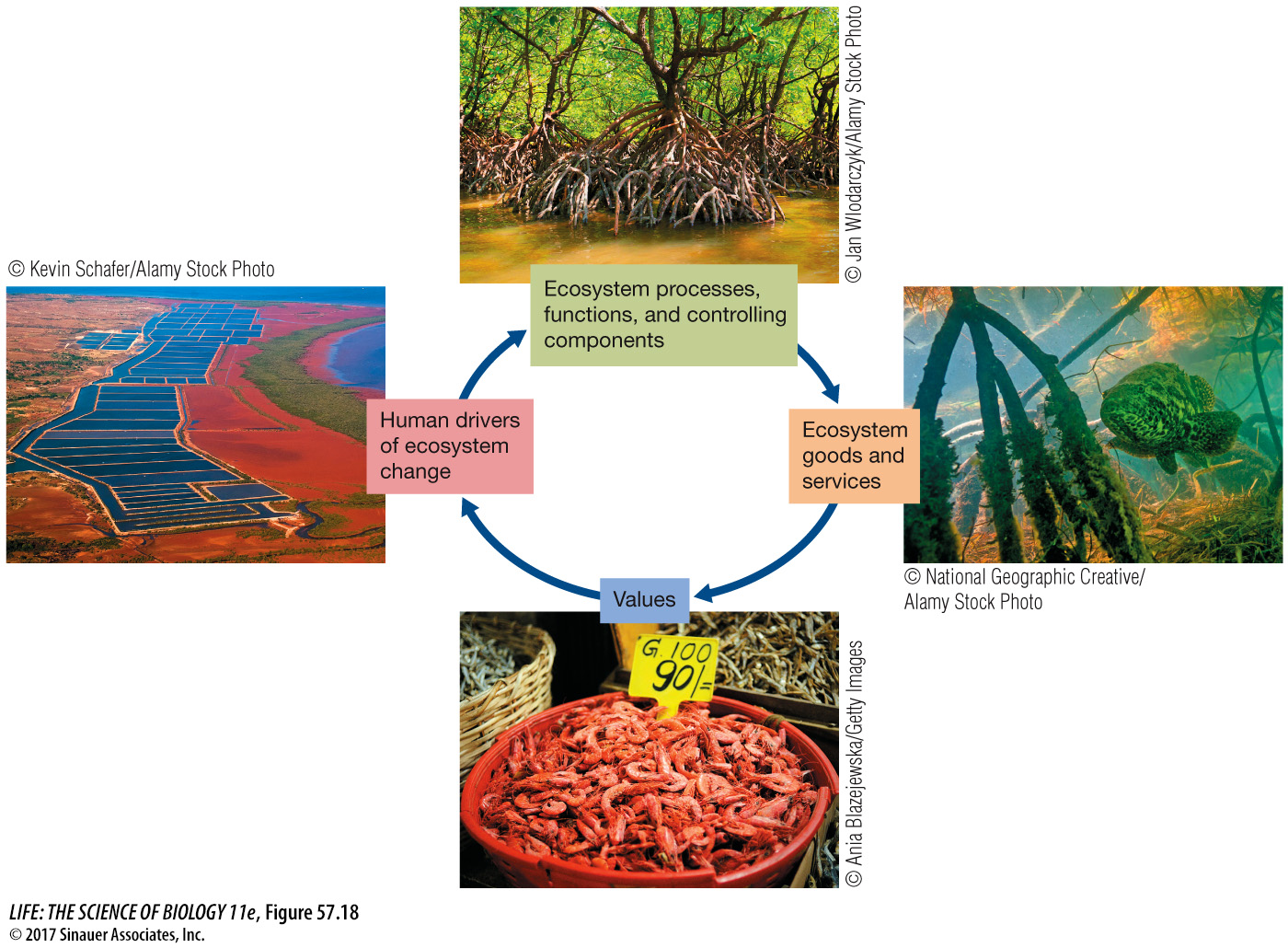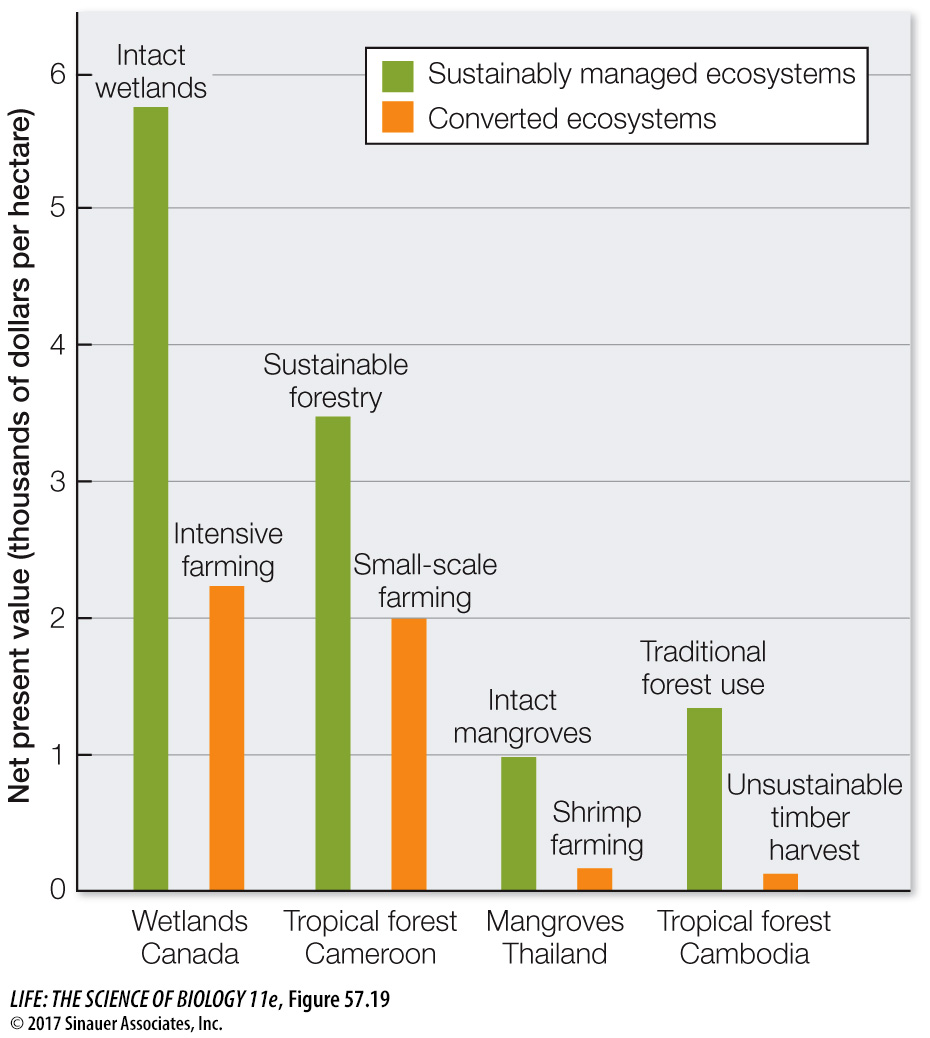The value of ecosystem services can be measured
Practices that allow us to conserve or enhance ecosystems so as to benefit from specific ecosystem goods and services without compromising others are referred to as sustainable. To develop more sustainable practices, there has been growing interest in determining the economic value of ecosystem services. Ecosystem values are measures of how important ecosystem services are to people—that is, what they are worth. Placing a value on ecosystem services involves estimating the amount we are willing to pay to preserve or enhance ecosystem services. Ecosystem service valuation involves determining (1) the human drivers of ecosystem change, (2) the ecosystem processes or functions that are affected by those changes, (3) how those processes or functions influence all the goods and services of an ecosystem, and then (4) using a variety of economic and social evaluation tools to value those goods and services (Figure 57.18). Valuing ecosystem services can be difficult, because while it relatively easy to place a value on certain goods such as fish or timber, it is harder to value nonmarket services such as the existence of an endangered species or the ability to walk in an old-growth forest. Much of ecosystem service valuation involves determining through public surveys and census data the willingness of people to pay for such nonmarket services.
Page 1245

Figure 57.18 Key Steps to Ecosystem Service Valuation Placing a value on ecosystem services, such as this mangrove ecosystem used for shrimp farming, involves determining (1) the human drivers of ecosystem change, (2) the ecosystem processes or functions affected by those changes, (3) how those processes or functions affect the delivery of goods and services of an ecosystem, and (4) the willingness of people to pay for those goods and services.
For those ecosystems in which services have been valued, in many cases the total economic value of a sustainably managed ecosystem is higher than that of a converted or intensively exploited ecosystem (Figure 57.19). For example, the value of coastal ecosystems such as mangroves can be driven largely by the coastal protection that mangroves provide from extreme storm or tsunami events, even though the short-term monetary gains from converting mangroves to shrimp farms can be substantial.

Figure 57.19 The Economic Value of Sustainability Managed Ecosystems Many types of ecosystems are able to provide more goods and services, and thus have a higher value, when they are sustainably managed than when they are completely converted to human use.
Page 1246
An important aspect of valuing ecosystem services is changing the impression that ecosystem services are “public goods” with no market value. People who do not stand to profit from the services provided by ecosystems have no incentive to pay for them, whereas individuals who convert ecosystems reap great economic benefits. Government action may be needed to create incentives that encourage sustainable ecosystem management. Raising public awareness is essential to the implementation of sustainable management programs. Most people do not realize the long-term value of ecosystem goods and services or understand how human activities affect the functioning of ecosystems. Maintaining and enhancing ecosystem goods and services that have no established market value is especially difficult. Perhaps one of the most difficult ecosystem services to maintain and value is that of biodiversity. The final chapter of this book is devoted to this important topic.

